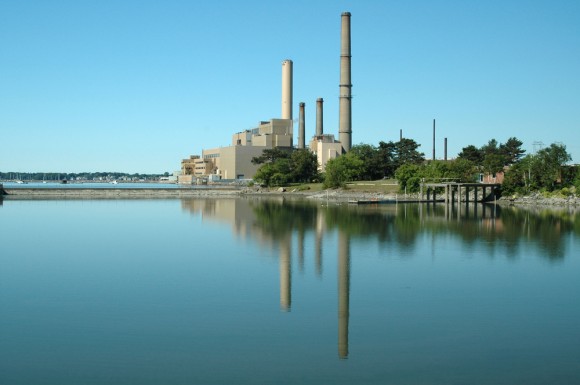
Massachusetts
President Obama recently announced he was ordering the federal government to increase its use of renewable energy to 20 percent by 2020, nearly triple the amount currently used. The President’s plan to use renewables is part of a larger action to combat climate change, limit pollution and promote U.S. energy independence.
While the president is taking steps towards renewable energy an ongoing battle persists in New England, with sparks flying high as parties argue the merits of a proposed natural gas power plant. A 692-megawatt gas-fired power plant has been cleared for construction on the waterfront in Salem, Massachusetts, about 16 miles north of Boston. The plant is currently a coal-fired power plant that’s been in operation since 1951. It has been responsible for large amounts of air pollution and toxic coal ash.
New Jersey-based Footprint Power, backed by Representative Keenan, has proposed to convert the coal-and-oil-fired power plant into a natural gas facility. Natural gas has taken off in New England and the impact has been measurable with carbon emissions dropping 21 percent since 2007. A New England advocacy group called the Conservation Law Foundation (CLF) has stepped in to stop construction of this new gas-powered plant by filing an appeal with the Massachusetts Supreme Judicial Court to overturn the state board’s approval of construction of the $800 million Salem plant.
According to Shanna Cleveland, a senior CLF attorney spearheading the appeal, the appeal was filed because no “credible evidence” was presented that showed how the Salem plant will comply with greenhouse gas emission limits in the 2008 Massachusetts Global Warming Solutions Act (GWSA). The Global Warming Solutions Act (GWSA) was signed into law in Massachusetts in 2008:
“…created a framework for reducing heat-trapping emissions to levels that scientists believe give us a decent chance of avoiding the worst effects of global warming. It requires reductions from all sectors of the economy to reach a target of a 25% reduction of Greenhouse Gas (GHG) emissions by 2020 and an 80% reduction by 2050.”
According to the CLF:
“Footprint Power and Representative Keenan have claimed that the proposed natural gas plant somehow will benefit the climate, but in doing so they seem to ignore that this new power plant would be capable of emitting over 2 million tons of carbon dioxide a year – a significant problem if we’re going to de-carbonize the electric grid by 2050, as necessary….The bottom line is that while natural gas may burn cleaner than coal and oil, it is still a fossil fuel with significant carbon emissions. Locking in new natural gas infrastructure means locking out zero-carbon technologies like wind and solar.”
Is Natural Gas the Answer? In the short term natural gas plants have relatively low upfront costs and they can roll with the fluctuation in power demand. Gas is also seen as an immediate way to reduce greenhouse gas emissions. There is however concern that without a new pipeline infrastructure in place to supply gas generators, gas prices are likely to rise and service to customers could be spotty during winter weather. Throw in the possibility of stricter emissions standards and natural gas might not be as appealing in the long-term.
Stay tuned for part two: Gas v. Renewable Energy: What Does the Future Hold for New England and Beyond?




